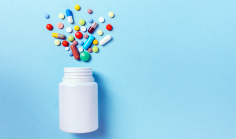The treatment for diabetes can vary from type to type. Below are the main medications for each type of diabetes:
Insulin is the primary medication used to treat type 1 diabetes. Up until the 1980s, medical grade insulin was made from purified pig or cow insulin. Today, medical grade insulin is made in laboratories using genetic recombinant technology to allow pancreatic cells in laboratory cultures to produce insulin.
There are four different types of insulin that can be taken. These are:
- Rapid-acting (Humalog, Novolog, Apidra): begins to work after 15 minutes, peaks in 30 to 90 minutes, and has a duration of three to four hours.
- Short-acting (Humulin R, Velosulin – for use with a pump): begins to work in 30 to 60 minutes, peaks in two to three hours, and has a duration of three to six hours.
- Intermediate-acting (NPH): begins to work in 90 minutes to six hours, peaks in four to 14 hours, and has a duration of up to 24 hours.
- Long-acting (Lantus, Levernir): begins to work in six to 14 hours and remains effective for 24 to 36 hours.
Insulin is administered by injection several times throughout the day so that it can avoid the digestive enzymes of the stomach, which would otherwise destroy it. Insulin injections come in the form of:
- Syringe and vial. When insulin injections are done properly, most people find that they are relatively painless. Insulin is usually given as a subcutaneous injection, meaning that the needle is inserted into the fat layer between the skin and the muscle and deposits the insulin there.
- Insulin pens look like an old-fashioned cartridge pen, except that it is disposable, has a needle, and holds a pre-filled cartridge of insulin. Pens are particularly useful for people who travel frequently, whose coordination is impaired, or those who have visual difficulties. They are also more useful for people who require very small doses of insulin.
- Pump. This is a computerized device about the size of a beeper that is worn on the belt or in a pocket. It delivers a steady, measured dose of insulin through a flexible plastic tube called a cannula. With the aid of a small needle, the cannula is inserted through the skin, usually in the abdominal region, and is taped in place. In some products, the needle is removed and only a soft catheter remains in place. Pumps can deliver very precise insulin doses for different times of the day.
Symlin (pramlintide) is an injectable medication that is always used in combination with insulin and never alone. Symlin is a synthetic version of the body’s natural amylin, a peptide hormone co-secreted with insulin by the pancreas. Symlin is used to control high blood sugar that can occur after meals.
Diet is also key to keeping diabetes under control. A low carbohydrate diet is often recommended; by consuming fewer carbohydrates there will be less glucose in the bloodstream, which lowers the required level of insulin to control the body’s blood sugar.
Artificial pancreas are an upcoming treatment option that is currently in clinical trials. This will be an implanted device that simultaneously measures glucose and delivers appropriate insulin continuously. Clinical trials are promising and this new treatment could provide very effective glucose control and avoid many diabetic health complications.
Many people with diabetes use combinations of medications and insulin to better control and manage their condition. Your physician and the other members of your care team will help determine what is best for you.













